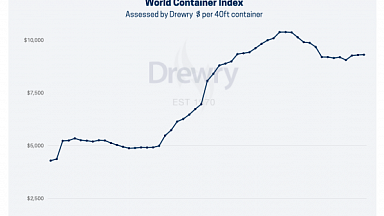On Monday, a train carrying 50 40-foot containers full of air-conditioners, LCD screens and lighting products departed from the Nansha Port South Station, in South China’s Guangdong Province. It is expected to arrive in Europe in 15 days, marking the start of a China-Europe freight train line.
The route, which combines a multi-modal transport network of ports and railways, is expected to bring huge benefits to Chinese exporters to Europe with a more efficient and cost effective solution.
«It is estimated that the transportation time will be reduced by about 30 percent and logistics costs will also be greatly reduced,» said Liu Luxiang, a Shanghai based International freight forwarder.
Li Heng, an employee from a cross-border e-commerce company, based in Guangdong, also sees the route as an efficient transport channel to meet the needs of increasing orders from China’s cross border dealers, especially when international transport is unpredictable under the repeated global COVID-19 flareups.
The Nansha Port of the Guangzhou Port Group, is one of the fastest growing ports in South China. In 2015, Nansha district, in southeast Guangzhou, became one of the pilot free trade zones (FTZs) to promote foreign trade and investment, Xinhua News Agency reported.
In recent years, Nansha Port’s logistics network has been constantly improved with increasing num-ber of international routes and a volume of foreign trade containers that has maintained double-digit growth on yearly basis.
At present, the Nansha Port has 143 international routes, covering major ports at home and abroad, including 122 lanes in Belt and Road countries. Since 2020, the Guangzhou Port has managed a total of 21 round-trip freight trains from China to Europe and Central Asia, including Poland, Kazakhstan, Uzbekistan and Germany. The goods transported include electronics made in South Korea and Vietnam as well as household appliances and clothing made in China’s Greater Bay Area. The launch of the first China-Europe freight train in Nansha Port came at the heels of the opening of a new international railway route from Southwest China’s Chongqing to Mandalay, in southern My-anmar.
The first freight train left Chongqing on May 23 and arrived in Myanmar on May 28. It is set to arrive in Mandalay about 20 days earlier than what it would take on traditional routes.
The new route is expected to strengthen Chongqing’s connectivity with ASEAN member countries and signatories of the Regional Comprehensive Economic Partnership (RCEP), Chongqing officials said.





